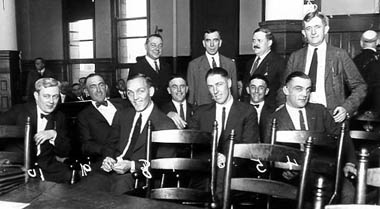|
It
was almost unthinkable: players throwing
the World Series? Yet, that's what happened--or maybe didn't
happen--in the fall of 1919.
The players on the Charles
Comiskey's 1919 Chicago White Sox team were a fractious lot.
The club was divided into two "gangs" of players, each with practically
nothing to say to the other. Together they formed the best team in
baseball--perhaps one of the best
teams that ever played the game, yet they--like all ball players of the
time--were paid a fraction of
what
they were worth. Because of baseball's reserve
clause, any
player who refused to accept a contract was prohibited from playing
baseball
on any other professional team. The White Sox
owner paid two of his greatest stars, outfielder "Shoeless"
Joe Jackson and third baseman Buck
Weaver, only $6000 a year. Comiskey has been labeled the
tyrant and tightwad whose penurious practices made his players
especially willing to sell their baseball souls for money, but in fact
Comiskey was probably no worse than most owners--in fact, Chicago had
the highest team payroll in 1919. In the era of
the reserve clause, gamblers could find players on lots of teams
looking for extra cash. [continued]
|
